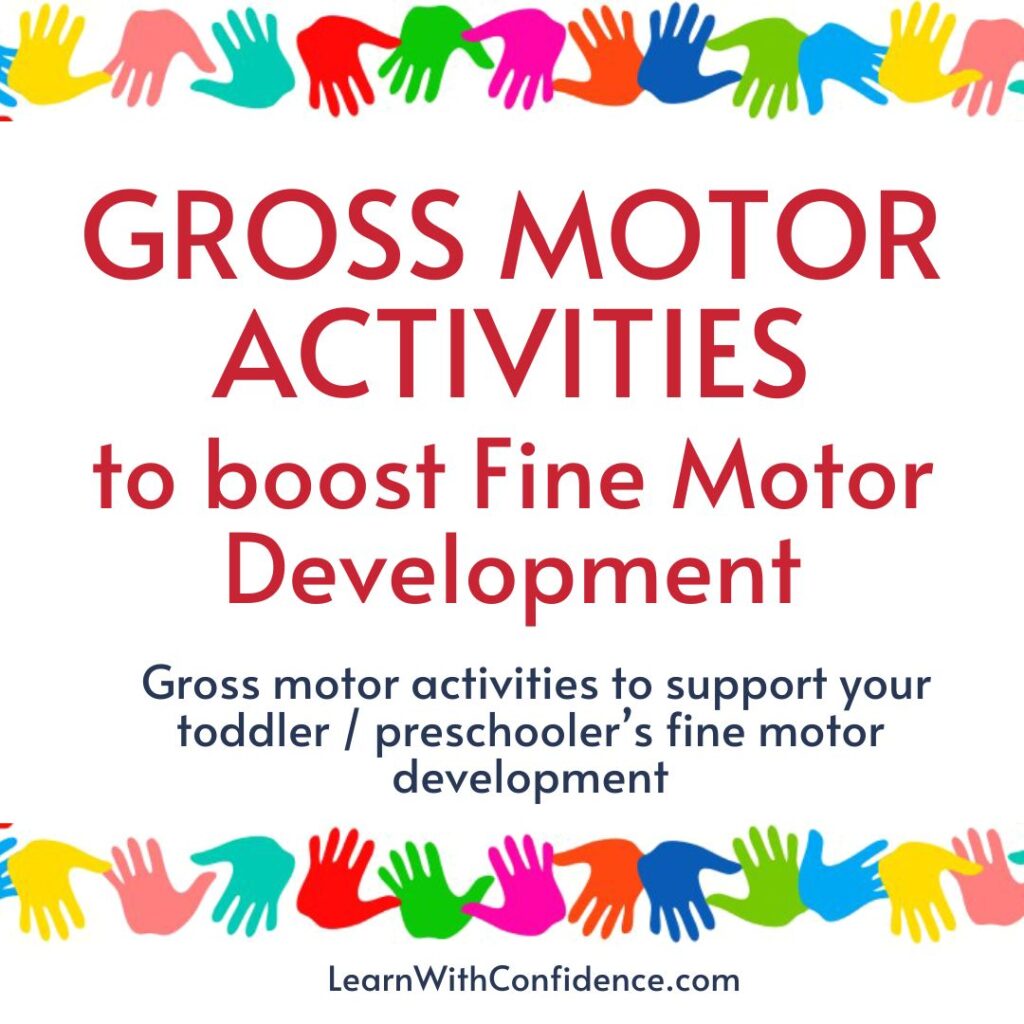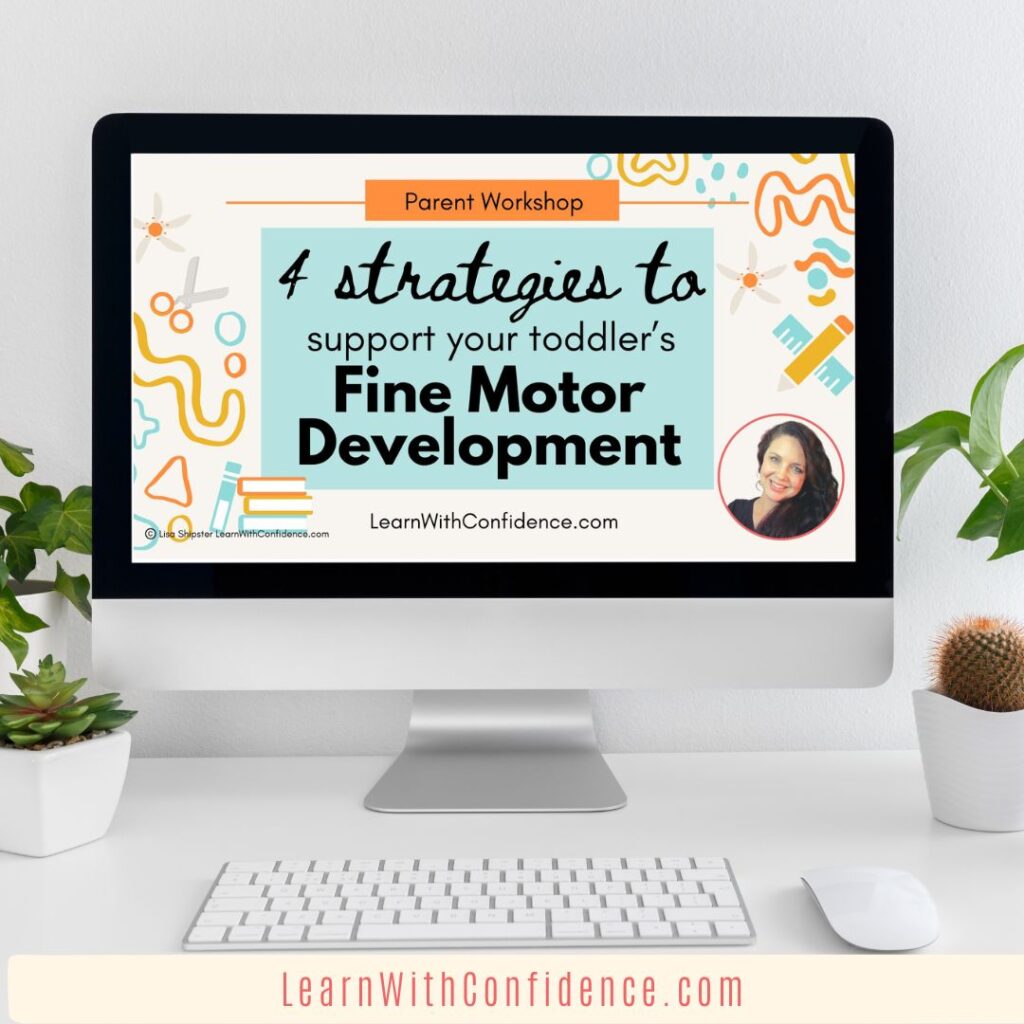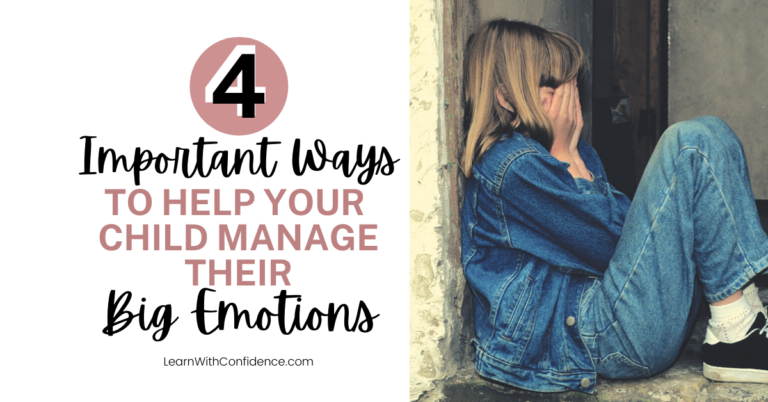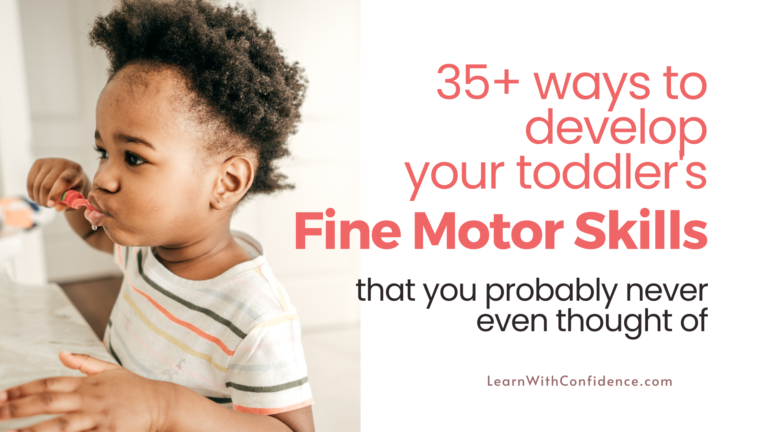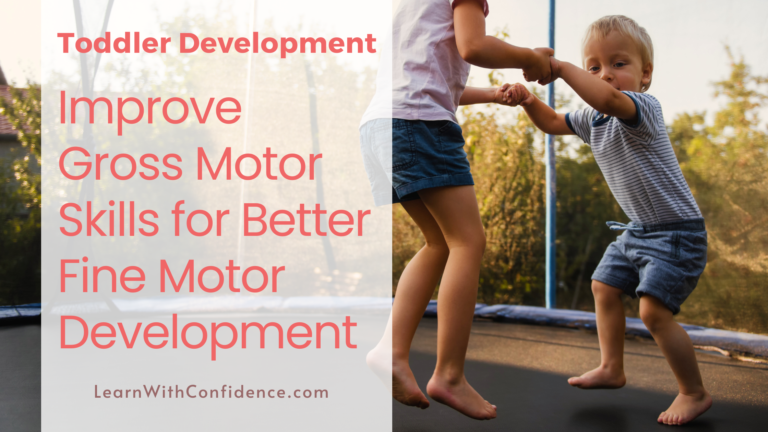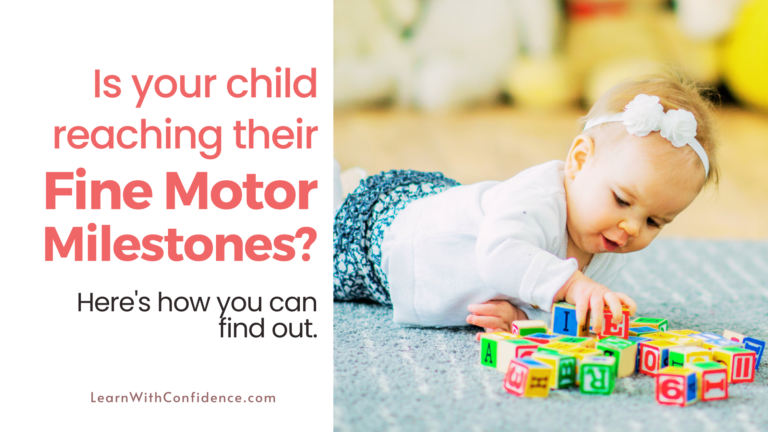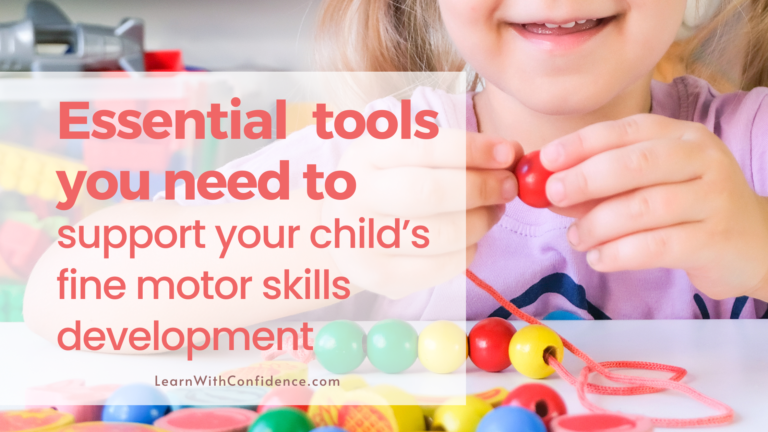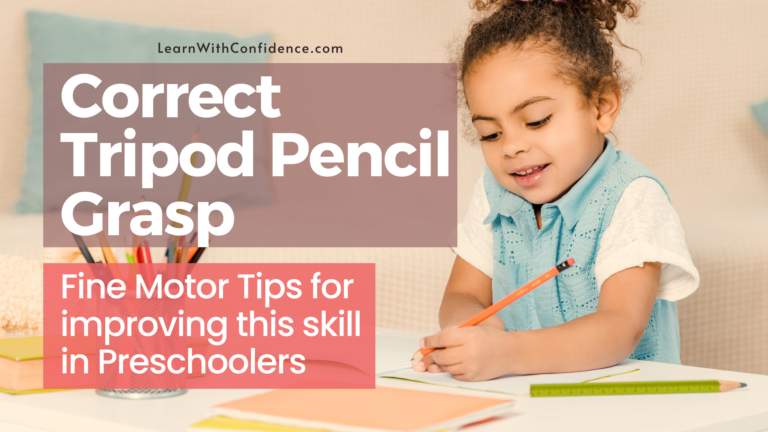3 Practical Ways to Help Your Toddler Transition from Gross to Fine Motor Skills
Toddlers are in a fascinating phase where they are beginning to transition from their gross motor skills and develop the fine motor skills that are crucial for more detailed tasks. This progression from “big” movements to “small” is essential for their overall development, as it allows them to build strength, coordination, and control.
In this post, we’ll explore the importance of this transition and provide practical ideas for activities you can do with your child to help them master these skills.
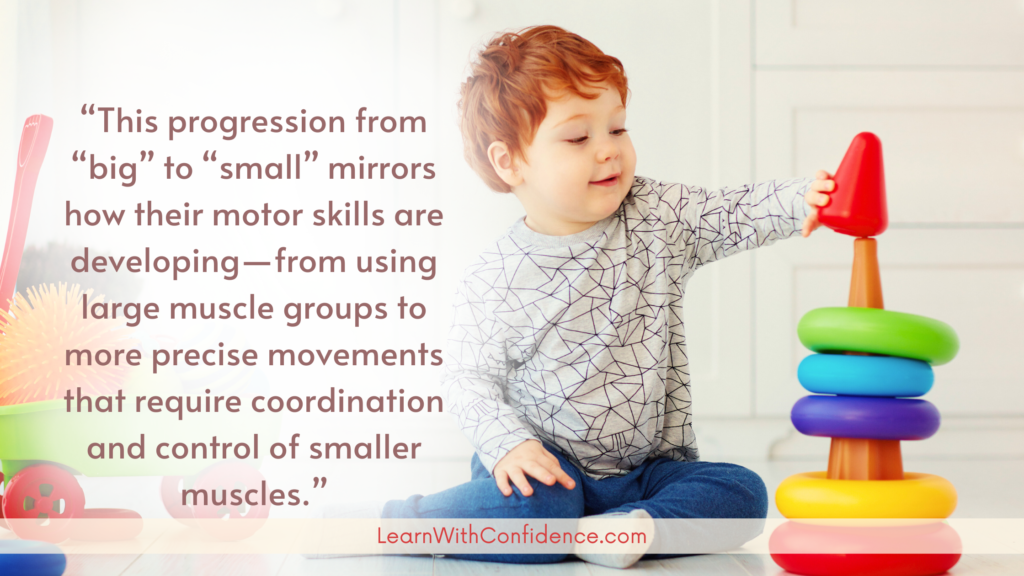
Why the “Big to Small” Approach Works
The “Big to Small” approach is all about easing your child into new skills by starting with larger, more manageable tasks before progressing to smaller, more intricate ones. Not only does this method help build your child’s confidence and competence in a gradual, supportive way. It also allows your child to develop the gross motor muscles that form a foundation for their fine motor development.
A really practical example is when your child is learning to thread items onto a string. When you start with larger objects, like threading toilet paper rolls onto a skipping rope, they use their gross motor skills more because they’re using bigger movements.
As they become more adept, you can introduce smaller items like pasta on a shoelace, eventually progressing to more refined tasks like threading a shoelace through a lacing card.
This progression mirrors how their motor skills are developing—from using large muscle groups to more precise movements that require coordination and control of smaller muscles.

Ideas for How to Implement the “Big to Small” Approach This Week
Here are some activities you can try with your toddler to put the “Big to Small” approach into action:
Rolling a Ball

Step 1: Start Big and Close
Sit on the floor with your legs spread out, facing your toddler, and have them sit the same way.
Start with a big, soft ball, like a beach ball, and roll it gently to your child. Encourage them to stop the ball with their hands and then roll it back to you. This activity helps build their hand-eye coordination and gross motor skills.
Step 2: Gradually Get Smaller and Increase Distance
As your child becomes more confident, you can start to introduce a smaller ball, like a playground ball. Increase the distance between you and your toddler to add a new challenge.
Eventually, work your way down to a tennis ball, which requires even more precision and control to catch, stop, and roll.
This simple progression helps to build visual-spatial awareness and fine-tune their coordination.
Balancing on a “Beam”

Step 1: Start with a Wide Base
Balancing is an excellent way to develop sensory skills, such as the vestibular and proprioceptive systems, which are key to your child’s overall motor development.
Begin by having your toddler walk along a wide, stable surface. You can even create this wide base by drawing a broad beam or bridge with chalk on the sidewalk or using tape on the floor.
Hold your child’s hand to provide support as they navigate this “beam”, staying centered on the beam or staying in the lines.
Step 2: Narrow the Beam Over Time
As your child’s balance improves, gradually narrow the “beam” or challenging them to walk along a curb or a narrow fallen tree at the park.
Encourage them to walk without holding your hand as they gain confidence.
Balancing on different surfaces and widths helps your child build core strength and enhances their ability to judge and correct their body’s position in space.
Feeding Themselves with a Spoon

Step 1: Start Big and Messy
Feeding themselves is a significant milestone for toddlers, but it requires a lot of coordination and fine motor control.
Begin by giving your child large, easy-to-grasp objects to practice with. For example, scrunch up newspaper into large balls and place them in a big bucket. Give your child a large spoon or ladle and have them scoop the newspaper balls out and transfer them to another container. They can stand while doing this too!
Step 2: Progress to Smaller Objects
Once they’ve mastered the large spoon and big objects, move on to something like (popped) popcorn.
Have them transfer the popcorn from one container to another using the large spoon. As they improve, gradually decrease the size of the spoon and the objects they’re scooping.
As you practice the “big” movement tasks more, you’ll start to see a difference when your child is using a regular spoon with small pieces of food.
Practice will help them build the necessary skills for feeding themselves independently – without a massive mess. (Well, eventually anyway – Rome was built in a day 😉.)
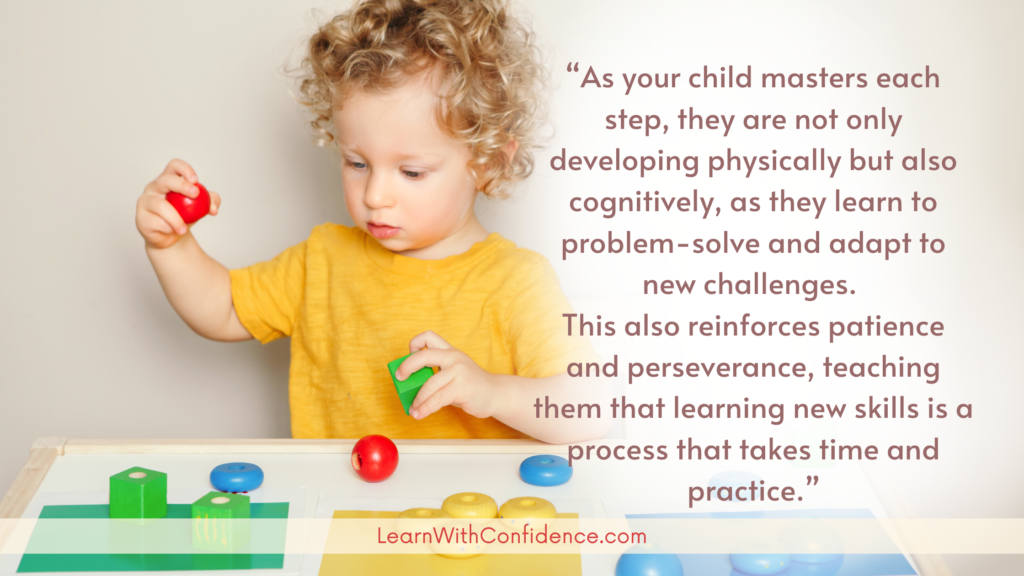
The Benefits of Moving from “Big to Small”
The “Big to Small” approach provides your child with the opportunity to build strength and coordination at a comfortable pace, as they transition from gross motor to fine motor skills.
By gradually increasing the challenge, you help your child develop new neural connections and refine their motor skills, all while building their confidence.
As your child masters each step, they are not only developing physically but also cognitively, as they learn to problem-solve and adapt to new challenges.
This method also reinforces patience and perseverance, teaching them that learning new skills is a process that takes time and practice.
Trust the process
Managing this transition from gross to fine motor skills is a critical stage in your toddler’s development. By following the “Big to Small” approach, you can help your child build the strength, coordination, and control they need to succeed in more complex tasks.
Remember, every small step forward is a victory worth celebrating! Encourage your child, be patient with the process, and enjoy watching them grow and develop these essential skills. With time and practice, they’ll be ready to tackle new challenges with confidence and excitement.
Ready to Learn More about Supporting your Child’s Fine Motor Development?
Here are some more awesome Fine Motor Resources I think you’ll love!
Connect with me
Have you got a new way to play with your child while you have fun developing their fine motor skills – drop a comment to let us know!
Feel free to reach out in the comments or send me an email to connect. It’s my mission to equip and empower you to help your child succeed – you are, after all, the best person for that job, because you are the expert on your child.

